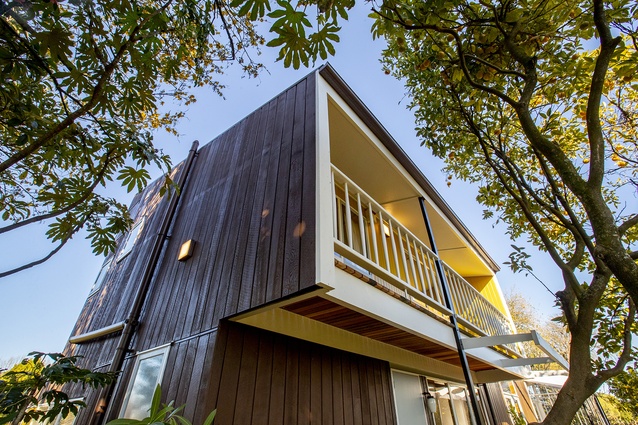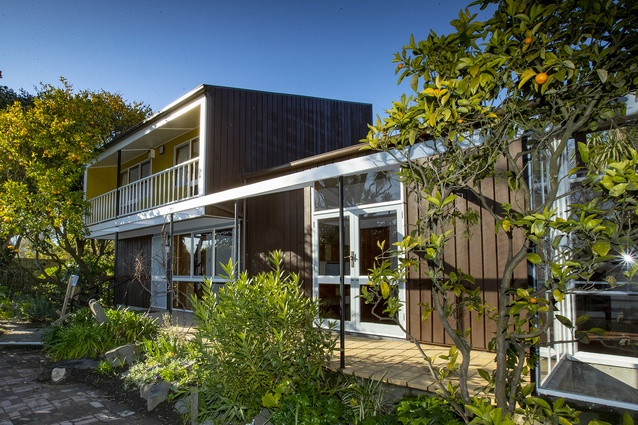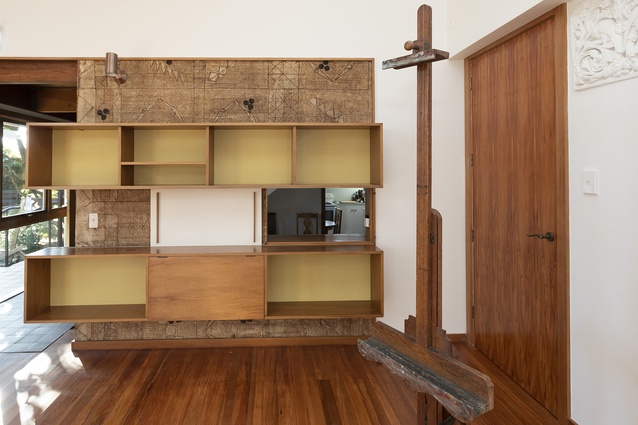Sutton House and garden listed as Category 1 historic place
Heritage New Zealand Pouhere Taonga has entered artist Bill Sutton’s home studio and garden at 20 Templar Street in Richmond, Christchurch as a Category 1 property on the New Zealand Heritage List/Rārangi Kōrero (the ‘List’).
The former home studio of the renowned Canterbury artist is run by a Charitable Trust as an artist residency – the first of its kind in Christchurch. Other nationally recognised artist’s homes that also offer artist residencies include the Rita Angus Cottage in Wellington and the Colin McCahon Cottage and Brian Brake House in Auckland.
Bill Sutton (1917–2000) was a Christchurch-born artist who taught at the Canterbury College School of Art from 1949 until his retirement in 1979. He is best known for his four-decade-long interpretation of the Canterbury landscape.
The List report by Heritage New Zealand Pouhere Taonga listing advisor Robyn Burgess reveals the cultural, architectural, and historical significance of the site. Long before any European dwellings were built on Templar Street, this site was a vital part of the seasonal food gathering space for Waitaha, Ngāti Māmoe and Ngāi Tahu. When Sutton bought the site in 1963, the previous colonial cottage had been demolished and the site was clear.
Sutton asked his friend and colleague at the School of Art, Tom Taylor, to design his new home. Taylor initially studied architecture but never qualified as an architect as he switched to a fine arts degree in sculpture. Despite this, Taylor designed several homes, including a house in Governors Bay for Margaret Mahy and a house/studio for artist Doris Lusk on Gloucester Street.
Taylor and Sutton worked together on the Sutton house design – integrating a tapa cloth backing into custom in-built shelving, designing windows and lighting for the studio and including a glasshouse that protruded from the studio/living room for Sutton’s orchids and sub-tropical plants.
Heritage New Zealand Pouhere Taonga describes the house’s architectural style as a mixture of colonial vernacular and modernist. It has a large studio/living room downstairs, taking up a third of the entire house plan, and a small private upstairs area with two bedrooms and a shower room.
The open studio gave Sutton the space to create larger landscape canvases and the extra studio space enabled him to accept more formal portrait commissions. Sutton also installed an Albion press in an adjacent storeroom/workshop on which he printed under the name Templar Press.
During construction, Sutton lived onsite in a caravan and started tree planting and garden planning. He intended that the house and garden would be a continuation of each other. He planted 30 native and exotic specimen trees. The garden had a brick courtyard, pathways, feature rocks and sculptures by Tom Taylor and Roy Cowan.
Burgess says the listing has huge cultural and social value as part of the history of Christchurch’s regional arts movement from the 1960s. “The listing also includes the unique garden which was designed and cared for by Sutton. It has been wonderful to enter another modernist building in on the List”.
The listing also captures the impact of the Canterbury earthquakes on East Christchurch and the city’s heritage, Burgess says. “The efforts of a few dedicated individuals who saved this building from demolition add to the remarkable story of this site.”
After Sutton died in 2000, the property was purchased by Christchurch Art Gallery senior curator, Neil Roberts. Roberts had long thought that Christchurch would benefit from an artist-in-residence facility – and he knew that Sutton’s house would suit, having first visited it as an art student in 1968. The Trustees of Bill Sutton’s estate and Roberts arranged a protective covenant on the house and garden in 2002 with the Christchurch City Council. Roberts intended to eventually gift the property in his will to the city.
The Canterbury Earthquakes of 2010–2011 caused the land around Templar Street to be classed as ‘red zone’ but the Sutton House had robust foundations and was not seriously damaged. While thefts and vandalism were unable to be warded off, Roberts and other heritage supporters continued to petition CERA, the local MP and the Christchurch City Council to save the house. As a result of their efforts, and the 2002 protective covenant, the house was not demolished. When Land Information New Zealand took over the property from CERA, it was discovered that a budget had been allocated to restore the property. Under LINZ’s ownership, the house underwent a significant structural seismic-strengthening renovation: removing non-compliant foil insulation, adding a wheelchair ramp, repairing cladding and repainting inside and out.
In 2020, Christchurch City Council took ownership of the Sutton House and Garden, which is now leased to, and managed by a Charitable Trust. The house has become an artist-in-residence facility and has already hosted several notable artists.












